Story and Photos by Graham Earl
Early March in Europe means just one thing to the motor industry: the Geneva Salon. Historically, this is the show that the manufacturers bring their new products to, and over the years there have been more launches of concepts and new models at Geneva than any other show in the world.
This year we had the new F12 Berlinetta from Ferrari and it looks like it’s going to be a winner. The car replaces the outgoing 599, and like its predecessor, it too is a front engined, V12-powered GT. That V12 is now a 6.3 liter, pumping out no less than 730 bhp – more than any previous Ferrari road car. With that power, and new technologies in braking, suspension, transmission and differential, and with less weight and greater structural stiffness than the previous car, it is no surprise that the F12 has lapped Ferrari’s test track at Fiorano faster than any other Ferrari production car, including the Enzo.
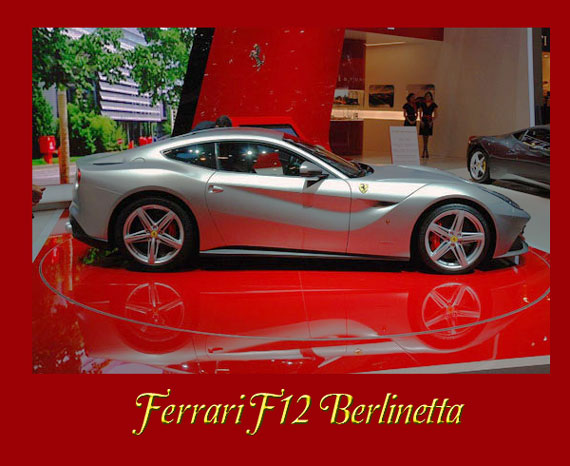
Not so long ago we thought the Enzo would be a hard act to follow, let alone beat, and yet here’s an off-the-shelf, showroom-ready front- engined GT that does just that. Coupled with that staggering performance potential, the car looks fabulous too. Pininfarina’s shape is cleaner and sharper than the 599, although there is a swathe running up the side, allowing hot air to exit the engine bay, which some people made negative comments about. On the stand were two examples; one silver and one red, and the colors chosen for the display were great choices, especially the silver. But on Pininfarina’s stand there was a black one, and that just looked very anonymous. Interestingly, while Ferrari’s stand was mobbed, nobody was at the Pininfarina stand.
Feeling confident about their new car, Ferrari is telling us that they had already sold about 360 of them to selected customers before the show. I’m not surprised. With the F12 and 458 Ferrari have a winning combination, and with the California doing nicely, they’re laughing. The same can’t be said about the FF, whose sales, I’m told, are disappointing.
Lamborghini also had a new model to tease with – the Aventador J. This is a speedster version of the already exciting Aventador, and as a concept it’s fine. But just how useful is a 700 bhp barchetta, with no windscreen or weather protection? Practicality be damned… this is Lamborghini, and Lamborghini make incredible cars which are not about driving to the shops. Driving a Lambo is an event, and this crazy concept fits the bill just perfectly. The deep red paint with “chrome effect” was specially developed for this car, which will remain a one-off, and although the color may not be to everyone’s taste, it certainly is attention-grabbing. One customer’s attention was grabbed alright, and he stumped up the $2.75 million to buy it. Did someone say there’s a global recession?
The coachbuilders were out in force as is usual at Geneva. Bertone was displaying a concept called Nuccio to celebrate 100 years since its founding. It aimed to imitate their fabulous Stratos Zero, but failed spectacularly. Certain stylistic elements were carried over from the ’70s show car, but the overall effect was disappointing. At the other end of their stand was an earlier masterpiece – the prototype Alfa Romeo Giulietta Spider from 1954. This came from the pen of master stylist Franco Scaglione when he headed the design team at Bertone, and for me it was one of the highlights of the show.
Pininfarina was showing two cars; the black Ferrari F12 and a concept “sports sedan” called Cambiano. This looked anything but sporty, but it did have a certain elegance and grace with nice detailing and innovative driving controls. Asymmetric coachwork, with one door on one side and two on the other, is becoming more commonplace, and was a feature on this design study. Four electric motors provide the go, and an on-board generator keeps the batteries charged.
Ital Design Giugiaro was showing two models. The first was a beach car based on the VW Up!, called the Azzuro, and this neatly imitated the theme of the Ghia Jolly of old. Sadly, there are no plans to put this car into production. The other car on display was a four-seater sporting GT, called Brivido, and two examples were on the stand; one a finished, driving vehicle, the other a mock-up in Martini Racing livery.
Not unlike a modern Lamborghini Marzal with huge gullwing doors, this was Giugiaro’s showcase for their technological expertise. Since being purchased by VW, Ital Design no longer produces designs for manufacturers outside the parent group. The substantial production facility they have near Turin is used for developing and testing products from within the vast VW empire. The Brivido bristles with new ideas, like controls for heating and ventilation, navigation and entertainment incorporating iPad touch screens. The car is fully functioning, using a supercharged VW Group 3 litre V6 plus an electric motor with generator, driving through an 8 speed auto transmission.
The most interesting new design was a modern interpretation of the Alfa Romeo Disco Volante. The original was built 60 years ago, by Carrozzeria Touring, on Alfa Romeo 1900 running gear. Touring was displaying a stunning concept based on the Alfa Romeo 8C Competizione running gear, with styling cues that made reference to the original model, as a celebration of the 60th anniversary of this influential design. The new car will be produced in a small run, with a maximum of ten examples, the first of which has already been sold. Using the 450 bhp 4.7 litre V8 from the donor car, maximum speed will be in the order of 186mph and 0-60mph will take around 4.2 seconds. Keen interest was displayed, and the stand was busy at all times. Many observers voted it the Car of The Show. Certainly, young Belgian designer, Louis de Fabribeckers, has done a fine job for this most illustrious of Italian coachbuilders. He looks sure to be a notable talent for the future.
The Others
Not to be outdone by Lamborghini, Pagani were showing two of their sublime Huayras, one white and the other in bare, unpainted carbon fibre (Pagani will sell you a car with this finish, but you have to pay more to have it unpainted!). Although this car was launched here a year ago, Pagani told me that none have so far been delivered to customers. I’m sure it will be worth the wait for those who have put down the $1.15 million entry fee to join the exclusive owners’ club. While there are those who bemoan the fact that the car is less radical-looking than the Zonda (which Pagani will still supply you with, if you ask them, in spite of them officially having killed it off) I personally think it’s a much better design than the older car.
The transport design students from IED (Istituto Europeo di Design) were showing a mocked-up proposal for a modern day Cisitalia. There are plans in the air for the revival of the Cisitalia name on a new car, and IED was asked to come up with a design, but the proposal on show was a bit clumsy. Interesting, nevertheless, and this design institute continues to turn out very talented designers. Long may they continue to show their work at Geneva.
Lancia had a large stand, displaying the fruits of their arranged marriage with Chrysler. I can’t help feeling this marriage of convenience is a pity, and I don’t think it’s good for either brand. American makers don’t sell their cars in Europe because the Europeans don’t want them, and putting a Lancia badge on the front isn’t going to change that. I guess the same is true in reverse with the American market buying Lancias with Chrysler badges. I wonder how long before the divorce…
There was a Chrysler 300, badged as a Lancia Thema, which just seemed weird, and another revived name, Flavia, was applied to the Chrysler 200, in both closed and cabriolet formats. The less said about this the better.
Zagato didn’t have a stand, but their products were on show. Aston Martin were displaying the V12 Zagato, which broke cover at last year’s Villa D’Este concours. At that time it was a spartan and racy track-oriented prototype, but here at Geneva we saw the polished ready-for-customer-consumption version. And it looked very nice too.
Also displaying a new Zagato-styled model was AC, who was re-launching here. Apart from their numerous iterations of the ubiquitous Cobra, the new model named 378 wears distinctive Zagato clothing. Strictly speaking, this isn’t actually a new model because Zagato displayed the same design at this show a couple of years ago. Then it was called the Perana Z1. AC has taken up the design and production of the new car is already well underway in South Africa. The cars are built in the same factory that makes Nobles, Superformance GT40s, Daytona Cobras, and other Cobra replicas. I’ve been to the factory and was immensely impressed with the quality of the products being turned out, so hopes are high for the new AC. This isn’t the first AC to be clothed by Zagato (there was a one-off Zagato coupé based on an Ace in the ’50s) but it does deviate from the norm by using a GM engine, rather than the Ford motors one normally associates with this brand.
So, true to form, the Geneva Salon gave us some great new models to look forward to in the coming months, and continues to showcase the work from the world’s top designers.
About the Author: Graham Earl is a Londoner who has done it all, from models to racing vintage car at Goodwood. His specialty is post war Italian cars. We welcome Graham to the pages of VeloceToday.
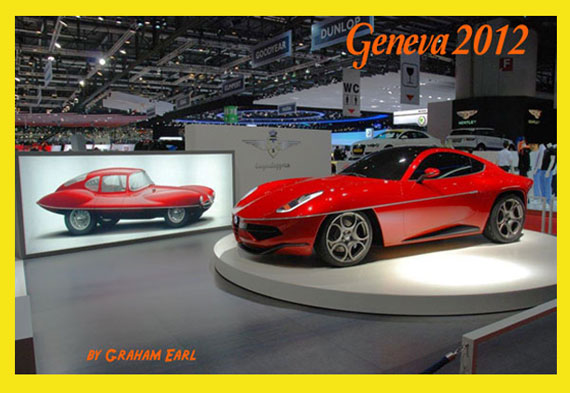
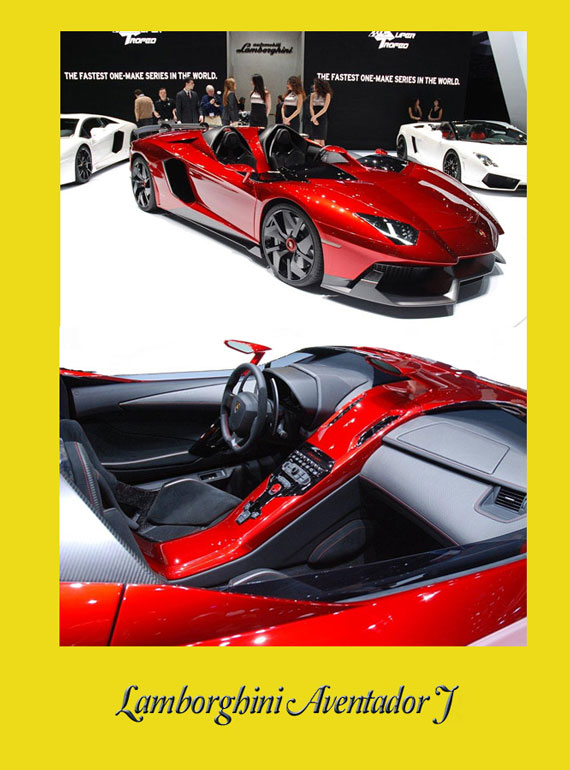
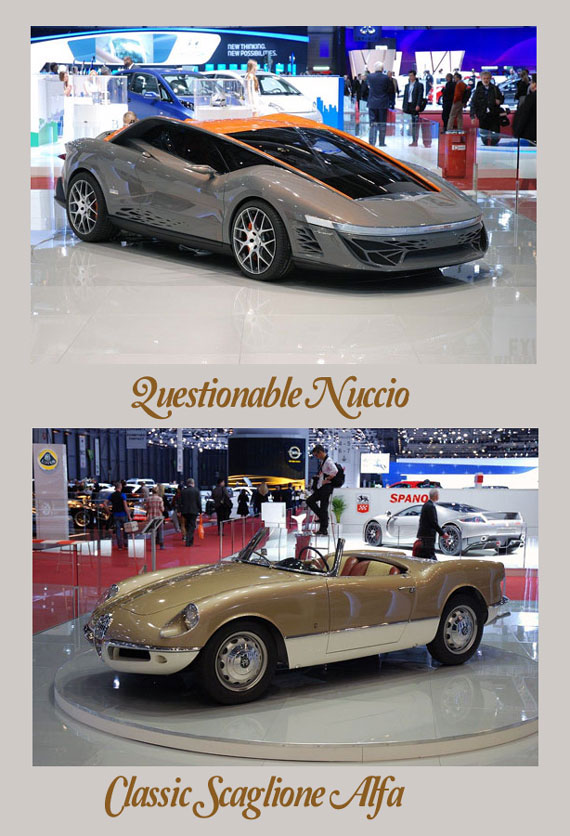
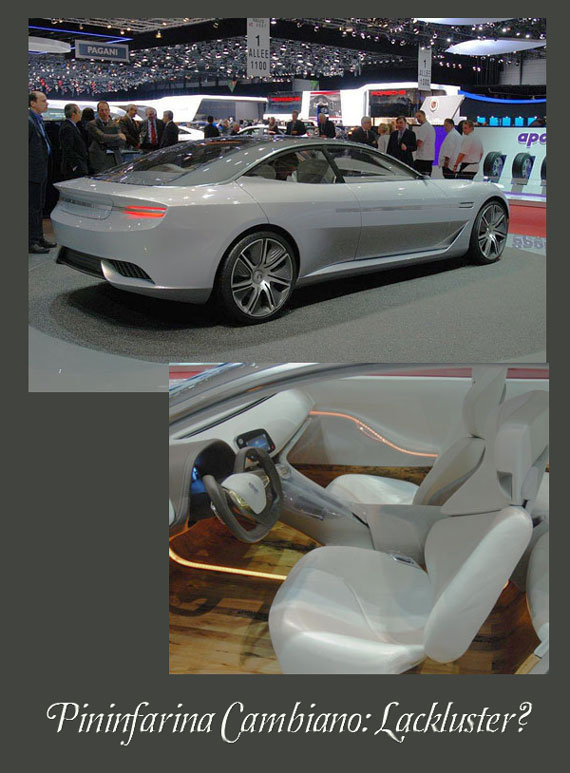
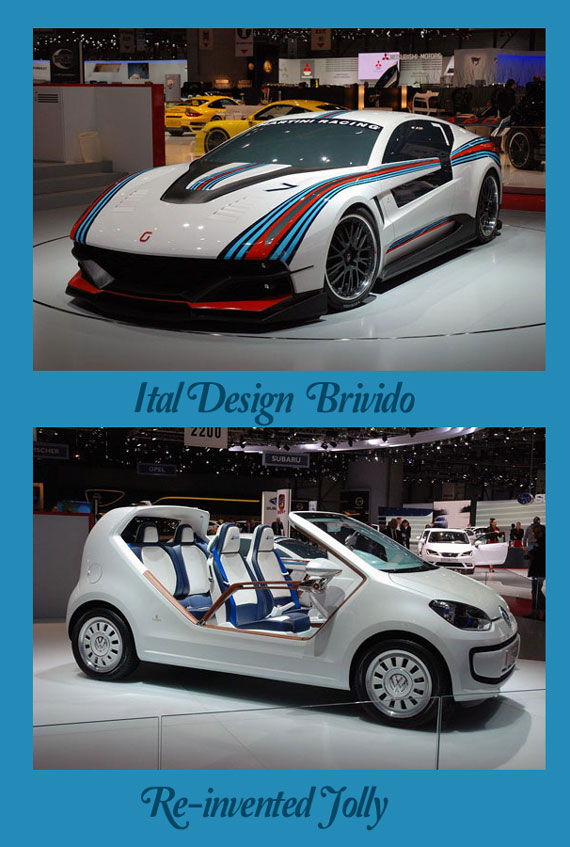
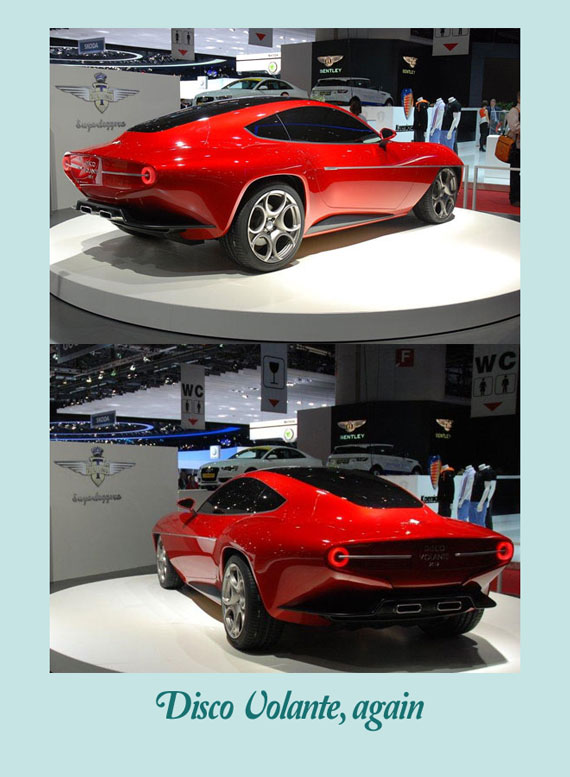
WOW, I liked the old flying sausers, but this new one looks like it should have stolen the show-what Ferrari? what Lamborgini?
Disco Volante Again– NO!
The attempt at a reborn Flying Sausage Again looks like a reborn Sprint Speziale.
The original SS was by far the best looking post war Alfa production car.
Jerry Lehrer
Instead of two rear-quarter views (!), you could have shown us a front view of the new Disco!
The Scaglione 1954 prototype should be produced today..such a gorgeous piece!